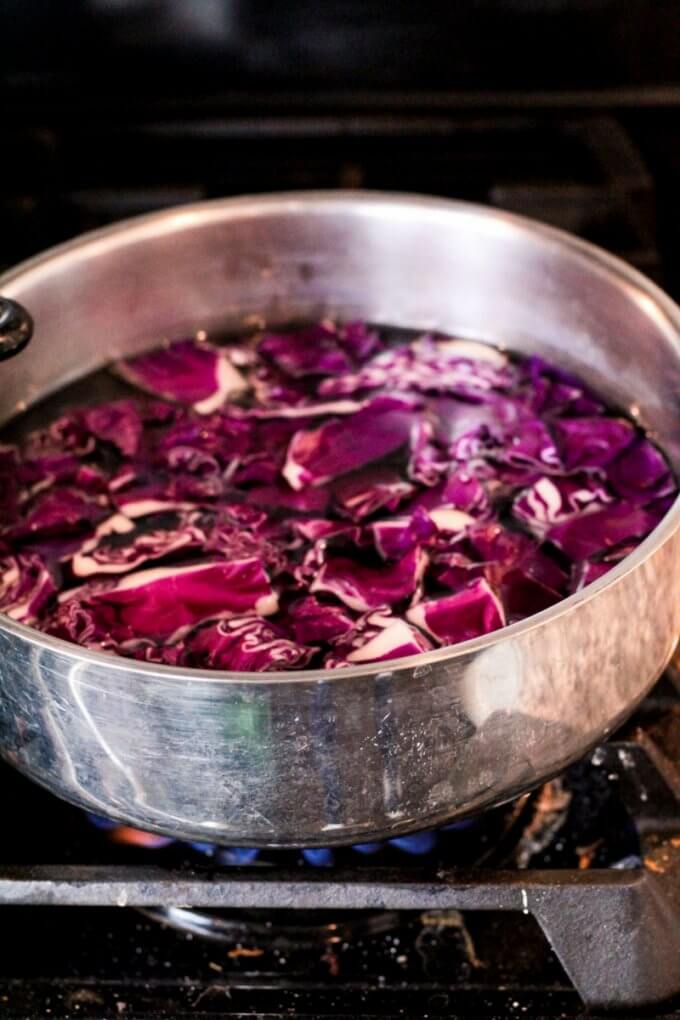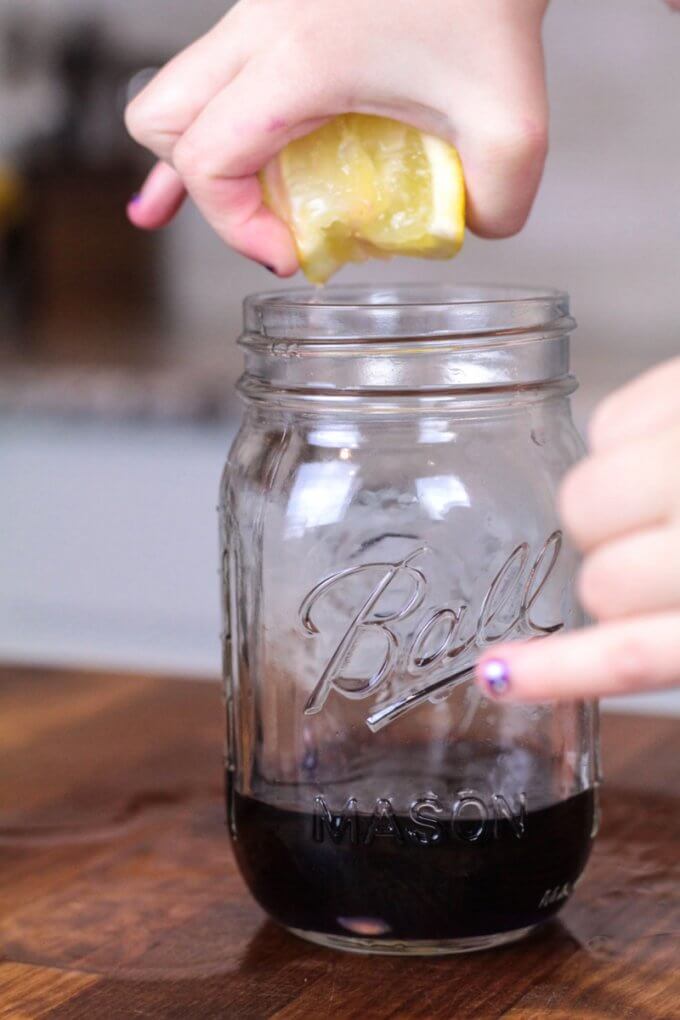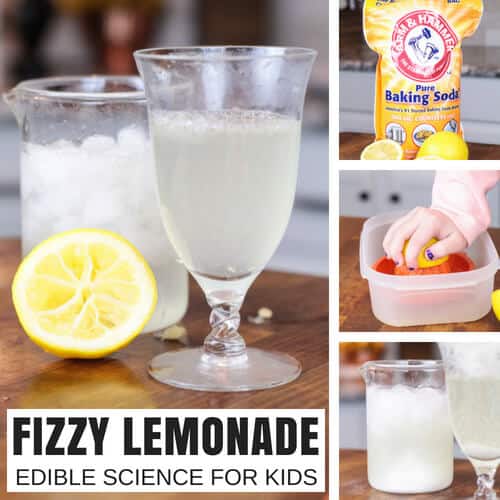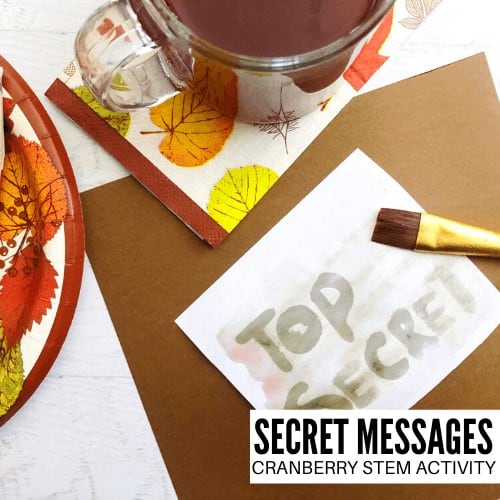I’m not a big fan of cabbage except for when it’s used for science! Food science is super cool and is awesome for kids. This isn’t the sweetest-smelling science experiment we have done, but once you get past the smell this cabbage science experiment is fascinating chemistry. Find out how to test pH with red cabbage!
HOW TO MAKE RED CABBAGE INDICATOR

RED CABBAGE PH INDICATOR
There are tons of fun pH science experiments for kids, but one of the most thrilling and satisfying is the cabbage pH indicator science experiment.
In this experiment, kids learn how cabbage can be used to test liquids of varying acid levels. Depending on the pH of the liquid, the cabbage turns shades of pink, purple, or green! It’s incredibly cool to watch, and the kids love it!
Read more about the pH Scale here and look for a free printable!
This makes a great middle school and elementary age science activity (and up!), but adult supervision and assistance are still required!
WATCH THE RED CABBAGE EXPERIMENT VIDEO:
WHAT IS AN INDICATOR IN CHEMISTRY?
pH stands for power of hydrogen. The pH scale is a way to measure the strength of an acid or base solution, and is numbered from 0 to 14.
Distilled water has a pH of 7, and is considered a neutral solution. Acids have a pH lower than 7 and bases have a higher pH higher than 7.
If you ask the kids about what types of things around the house are acidic, they might say vinegar or lemons. An acid is usually recognized as something with a sour or sharp taste. Baking soda is an example of a base.
An indicator is one way to work out the pH of a solution. Good indicators give a visible sign, usually a color change, when they come into contact with acids or bases. Like our red cabbage indicator below.
Why can red cabbage be used as an indicator to test pH?
Red cabbage contains anthocyanin, which is a water-soluble pigment. This pigment changes color when mixed with an acid or a base. Redder when mixed with an acid and greener when mixed with a base.
TIP: Here’s a simple pH scale for kids with a little extra information. Plus it gives you a few more items to test once you have made your red cabbage pH indicator!
Click here to get your printable science experiment worksheets!
RED CABBAGE EXPERIMENT
Let’s make an indicator and test it out on common household solutions!
SUPPLIES:
Grab a head or two of red cabbage and let’s get started! Even if your kids swear they hate cabbage, they will be loving it (at least for science sake) after this awesome cabbage chemistry experiment.
- Red cabbage
- Several jars or small containers
- Lemons (grab a few for a couple of extra science activities you will find below)
- Baking soda
- Other acids and bases to test (see more items to test below)
- pH test strips (optional but older kids will enjoy the added activity)

HOW TO MAKE RED CABBAGE INDICATOR
STEP 1. Start by cutting the red cabbage roughly into small pieces.
The cabbage indicator can be prepped ahead of time but I love when you can involve kids in the whole process!
STEP 3. Place your cut up cabbage in a medium saucepan and boil for 5 minutes.
STEP 3. After the 5 minutes, cover and let it rest for 30 minutes.

STEP 4. Go ahead and carefully pour the liquid into the jars. This is your acid-base indicator! (You can dilute the cabbage juice and it will still work)

USING RED CABBAGE PH INDICATOR
Now it’s time to test the pH of different items. We have a few common acids and bases for you to start with. This experiment is set up so that you add some of the acid or base to the jar of red cabbage juice, and observe the color change.
Please take care when mixing different items into your cabbage pH indicator. Adult supervision is recommended at all times. This NOT an edible science experiment!
You can find even more solutions to test out! Depending on your kid’s interest levels and needs, you could turn this into a huge science experiment. This red cabbage experiment also makes a terrific science fair project!
Before your kids start testing each one, have them make predictions about what color change they will see. Remember, red color is acidic and green color is basic.
Here are a few acids and bases to test…
1. LEMON JUICE
Squeeze lemon juice into one of the jars. What color did it change to?
What else can you do with lemons? We have a couple of fun ideas for exploring fun chemistry with this fruit!

2. BAKING SODA
Put a teaspoon of baking soda into a cabbage juice jar. Notice what happens! What color did the indicator change to?
3. VINEGAR
If you have ever experimented with baking soda and vinegar, your kids may already know that baking soda is a base and vinegar is an acid. Vinegar is also a great liquid to use to test with your red cabbage indicator!
EXPERIMENT WITH: Baking Soda and Vinegar Science
4. BLACK COFFEE
Coffee is a common drink for many people. But is it an acid or a base?

EXTEND THE ACTIVITY
Test other liquids to compare whether they are acids or bases. To extend the activity, use pH test strips to determine the exact pH of each liquid. If you dissolve them in water or the indicator, you can also test the pH of solids, like sugar or salt.
DIY: Make your own pH strips by soaking coffee filters in the cabbage juice and hang to dry, cut in strips!
Kids will have a blast testing a variety of kitchen pantry ingredients with their cabbage juice pH indicator science project! You may even need to buy more red cabbage the next time you go to the store. Simple chemistry is cool! Check out 65 chemistry experiments for kids for more ideas!
USE THE SCIENTIFIC METHOD
This cabbage PH science experiment is a fantastic opportunity to use the scientific method and start a journal using the free mini pack above. You can read about incorporating the scientific method here, including more information on the independent and dependent variables.
The first step in the scientific method is asking a question and developing a hypothesis. What do you think will happen if_______________? I think the_________ will___________if___________. This is the first step to diving deeper into science with kiddos and making connections!
SCIENCE FAIR PROJECTS
You can also easily turn your cabbage science experiment into a fantastic presentation along with your hypothesis. Check out the resources below to get started.
More Fun With Acids and Bases






Printable Science Projects For Kids
If you’re looking to grab all of our printable science projects in one convenient place plus exclusive worksheets and bonuses like a STEAM Project pack, our Science Project Pack is what you need! Over 300+ Pages!
- 90+ classic science activities with journal pages, supply lists, set up and process, and science information. NEW! Activity-specific observation pages!
- Best science practices posters and our original science method process folders for extra alternatives!
- Be a Collector activities pack introduces kids to the world of making collections through the eyes of a scientist. What will they collect first?
- Know the Words Science vocabulary pack includes flashcards, crosswords, and word searches that illuminate keywords in the experiments!
- My science journal writing prompts explore what it means to be a scientist!!
- Bonus STEAM Project Pack: Art meets science with doable projects!
- Bonus Quick Grab Packs for Biology, Earth Science, Chemistry, and Physics









This is an awesome experiment to do, even for older kids! It shows them that chemistry is very much a part of our lives and are closer to us than we think! I’m sure kids would love it 🙂